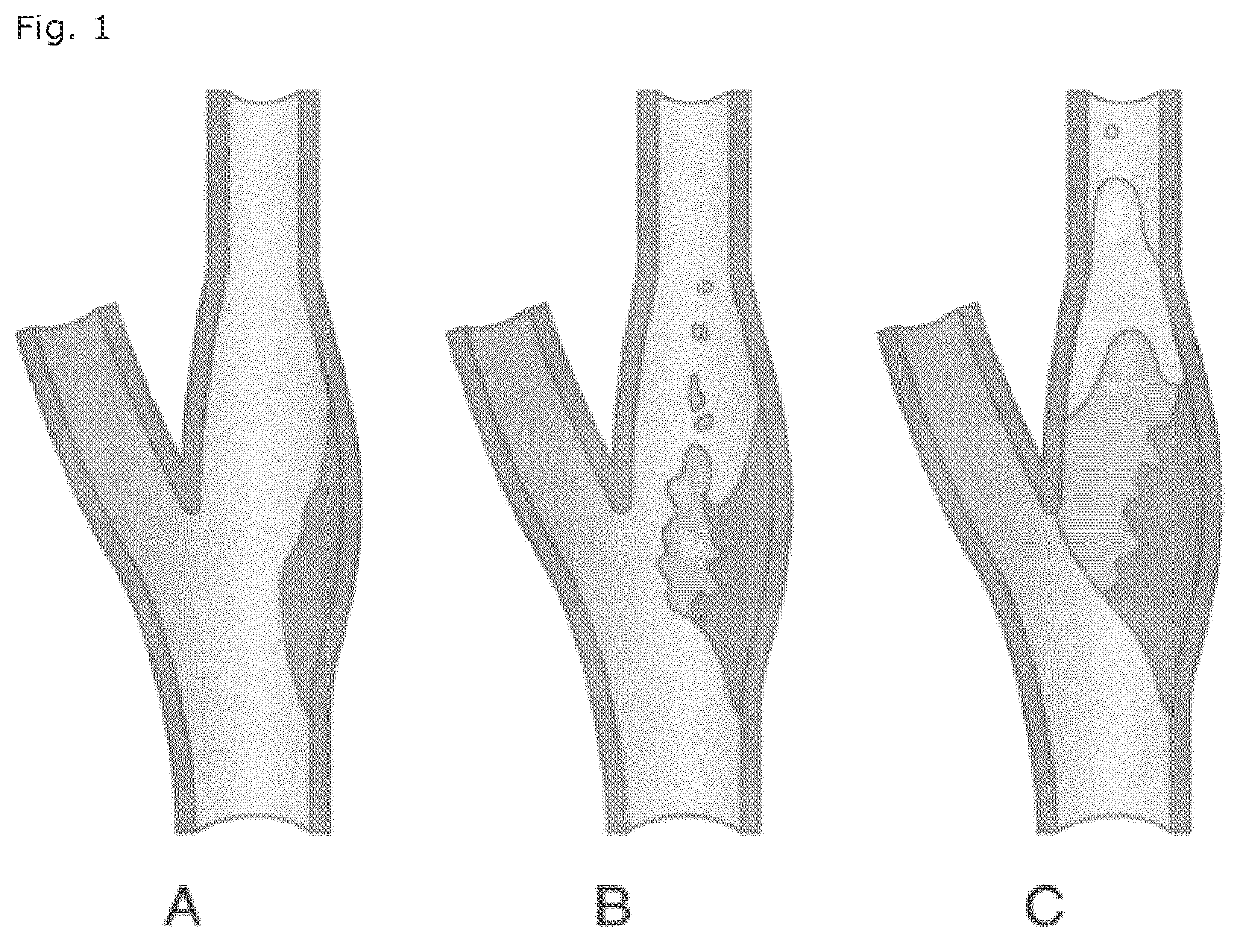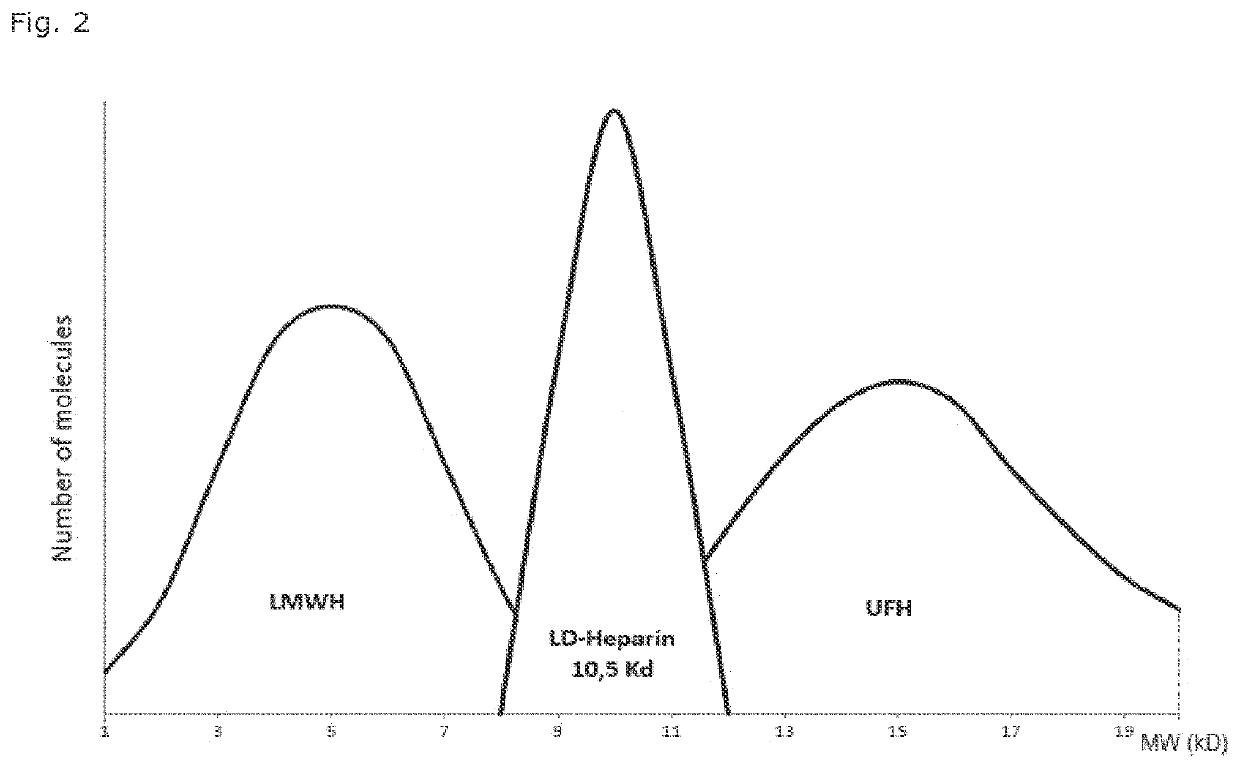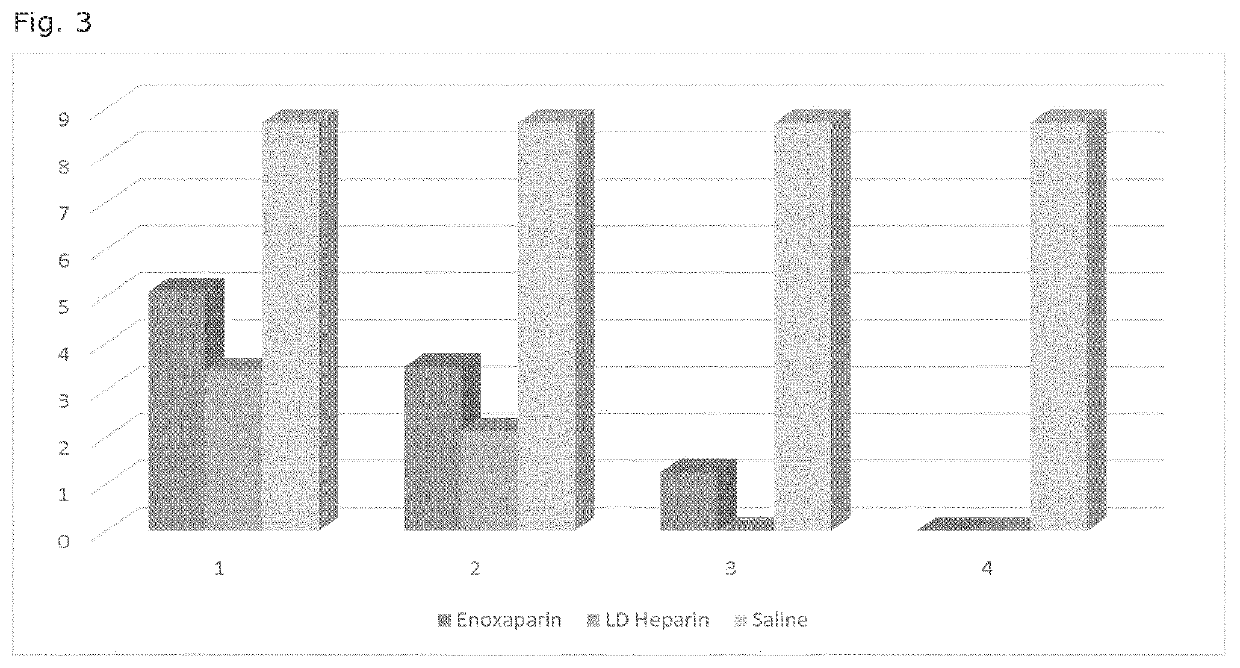LD Heparin for the treatment and secondary prevention of ischemic stroke
- Summary
- Abstract
- Description
- Claims
- Application Information
AI Technical Summary
Benefits of technology
Problems solved by technology
Method used
Image
Examples
Embodiment Construction
[0038]Owing to “Cochrane Collaboration”, reputated for its most comprehensive and best documented metanalyses in the major fields of medicine we are well informed on the state of the art:
[0039]The hypotheses of the Cochrane Stroke Group (3) were that immediate anticoagulation would be associated with:
1.) a reduced risk of dying or being dependent in activities of daily living a few months after stroke onset
2.) a reduced risk of early recurrent ischemic stroke
3.) an increased risk of symptomatic intracranial or extracranial haemorrhage, and
4.) a reduced risk of deep vein thrombosis and pulmonary embolism
[0040]Data from 21 trials including randomized data from >22000 participants showed that giving anticoagulants were not associated with any significant reduction in the odds of death at final follow up of greater than a month (OR 1.05; 95% CI 0.98-1.12)
[0041]In respect to recurrent stroke during treatment, however, anticoagulation was associated with a statistically significant reduct...
PUM
| Property | Measurement | Unit |
|---|---|---|
| Time | aaaaa | aaaaa |
| Time | aaaaa | aaaaa |
| Time | aaaaa | aaaaa |
Abstract
Description
Claims
Application Information
 Login to View More
Login to View More - R&D
- Intellectual Property
- Life Sciences
- Materials
- Tech Scout
- Unparalleled Data Quality
- Higher Quality Content
- 60% Fewer Hallucinations
Browse by: Latest US Patents, China's latest patents, Technical Efficacy Thesaurus, Application Domain, Technology Topic, Popular Technical Reports.
© 2025 PatSnap. All rights reserved.Legal|Privacy policy|Modern Slavery Act Transparency Statement|Sitemap|About US| Contact US: help@patsnap.com



